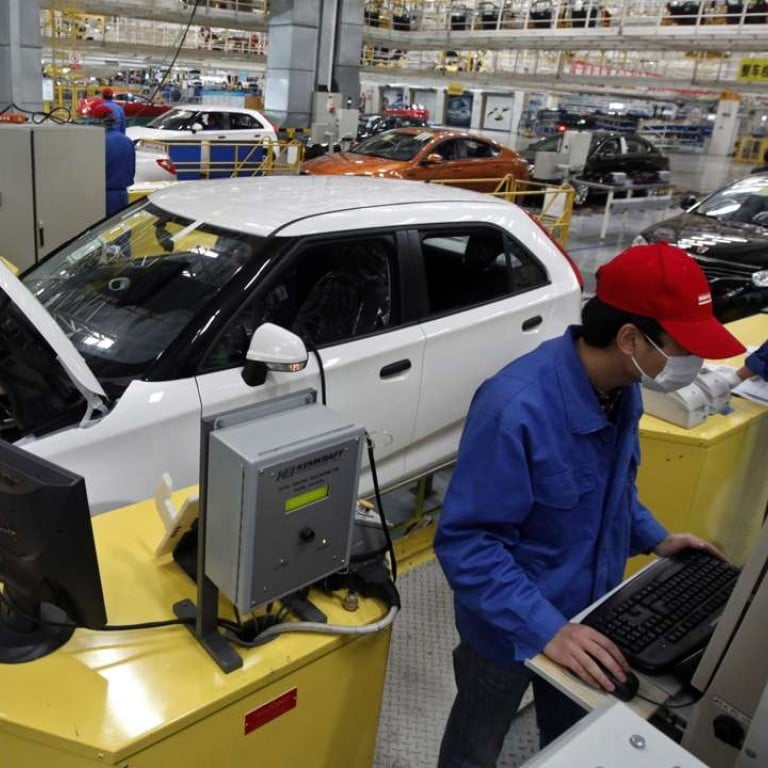
Four brands to dominate in China’s automotive oligopoly
Great Wall Motor, Geely, SAIC Motor and Guangzhou Auto will dominate among China’s carmakers in years to come, analysts say.
The automotive industry in China, where more vehicles are sold every year than anywhere else on earth, is developing toward an oligopoly dominated by four manufacturers with their own brands, analysts said.
Chinese customers, buoyed financially by three decades of economic growth and spoiled by the flood of top marques into the market, are accustomed to expecting higher quality from their vehicles, which marks the end of the “low-price, high-volume” business model for carmakers, said Guotai Junan Securities’ analysts Wang Yanxue, Zhang Shuli and Xu Weidong.
“The market share of four domestic car makers will surge from the current 45 per cent to 60 per cent or above, with both prices and volume rising together,” they said.
The four companies are Great Wall Motor Co. based in Henan province, Volvo’s owner Geely Automobile Holdings, SAIC Motor Corp in Shanghai, and Honda’s Chinese partner Guangzhou Automobile Group, according to their forecast.
Nearly 28 million vehicles were sold in China last year, a 13.7 per cent growth from 2015 that marks the industry in its golden age. The average price of a vehicle has risen by a third over a decade to 127,600 yuan (US$18,486) in 2016.

“China-branded SUVs have achieved a landslide victory in the price range between 100,000 yuan and 150,000 yuan,” the analysts said. “They now need to put their effort in the products that range from 150,000 yuan to 200,000 yuan.”
Great Wall Motor’s Haval series gave the carmaker a niche in the market of SUVs of under 150,000 yuan, while its “affordable luxury” WEY series will be a big step in its expansion when its launched in April, said Minsheng Securities Zhu Jinyan.
Great Wall’s 2016 revenue rose 29.7 per cent to 98.62 billion yuan, while its net profit rose 35.3 per cent to 10.35 billion yuan. Sales volume of SUVs jumped sharply, up 44 per cent year on year.
“We expect Great Wall to launch three new models this year,” Minsheng’s analysts said. “WEY will not only contribute to sales but also improve its brand image.”
Geely is also eyeing the market for prices ranging between 150,000 yuan and 200,000 yuan. It’s unveiling the LYNK & Co brand during the Shanghai Auto Show, a “milestone” for both the company and the industry, CICC analysts wrote in a research report.
Haitong Securities said the sales boom of LYNK will come in 2018, pushing Geely to another phase of quick growth.

Geely’s March sales volume jumped 74 per cent to 87,000 units. The company has completed 28 per cent of its annual sales target in the first quarter, with a 94 per cent surge in sales to 278,600 units.
“We believe the annual sales column can reach 115,000 units,” Haitong’s analyst Deng Xue said.
Guotai Junan expects profit growth of Great Wall and Geely after 2017 to be “significantly quicker” than before 2016.
In theUUnited States and South Korea, the stock prices of leading carmakers jumped 10 times in less than 20 years. From 1993 to 1999, Ford Motor Co. and Chrysler both saw their share prices soar up to 10 times, outpacing the Dow Jones Industrial Average, which doubled in the same period, Guotai Junan data showed.
From 2000 to 2014, Hyundai Motor’s market value surged from US$4 billion to US$60 billion, along with a swell in net profit and revenue.
The challenge for China’s automotive industry this year is the possible cancellation of the country’s tax cut policy. But the performance of carmakers with their own brands will still be worth watching, China Merchants Securities said in a research report.
“For leading company like SAIC, their own brands have entered a stage where explosive growth can be seen,” China Merchants said. “We are positive to its development in the long term.”

